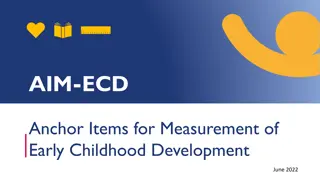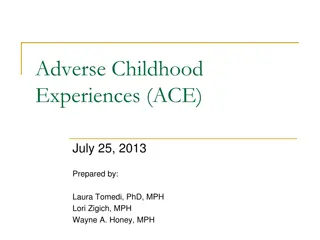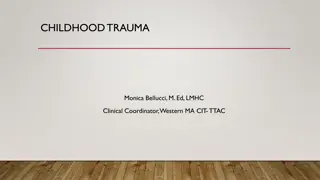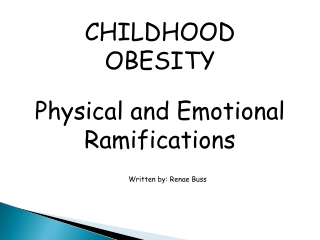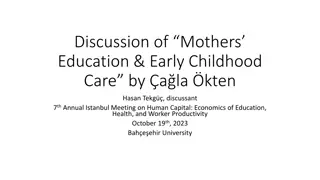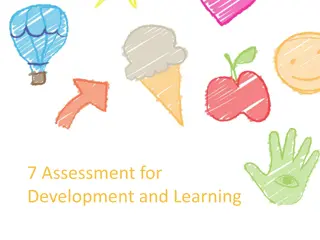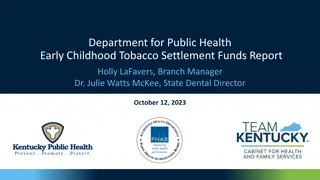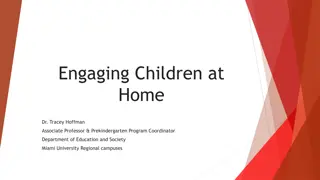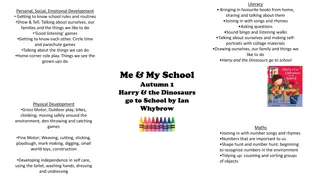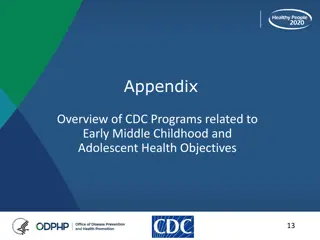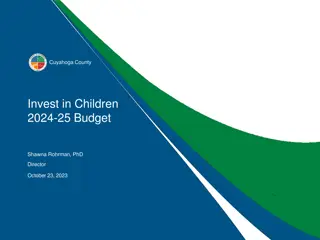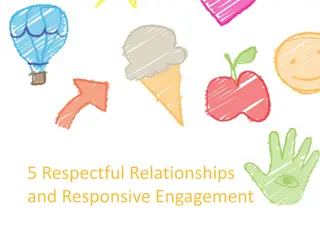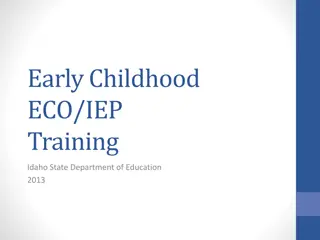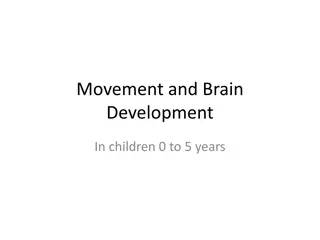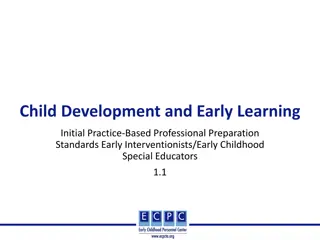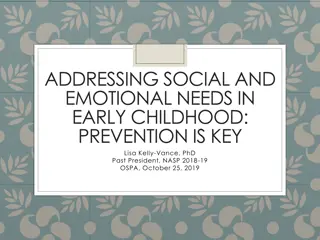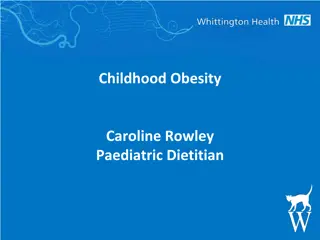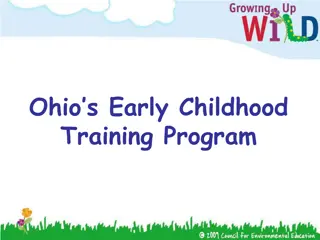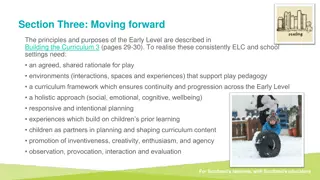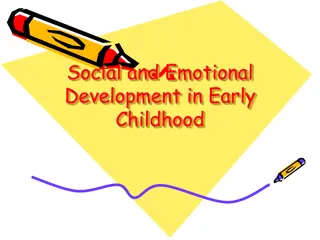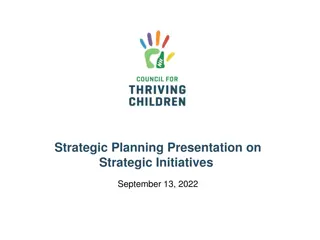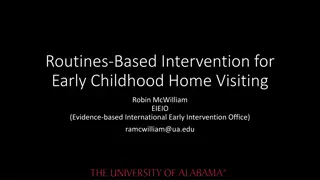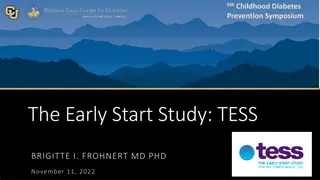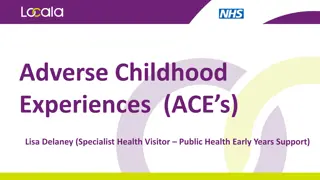Early Childhood Physical Development Overview
Physical development in early childhood encompasses growth in height and weight, brain development, gross motor skills, and fine motor skills. Children's bodies change significantly between ages 3 to 6, with notable improvements in motor skills and cognitive abilities. Gross motor activities such as climbing, running, and jumping, along with fine motor tasks like drawing and using utensils, play a crucial role in a child's overall development during this period.
Download Presentation

Please find below an Image/Link to download the presentation.
The content on the website is provided AS IS for your information and personal use only. It may not be sold, licensed, or shared on other websites without obtaining consent from the author. Download presentation by click this link. If you encounter any issues during the download, it is possible that the publisher has removed the file from their server.
E N D
Presentation Transcript
Physical Development in Early Childhood Chapter 7
Growth in Early Childhood U.S. children grow: about 3 inches a year add 4 5 pounds a year 3-year-old is very similar to a toddler with a large head, large stomach, short arms, and legs. By age 6 the torso has lengthened, and body proportions have become more like those of adults average 6-year-old weighs approximately 46 pounds and is about 46 inches in height. Rate of growth slows down from infancy
Brain Development Size of brain increases gradually during early childhood Age 3 brain is 75% of adult weight Age 6 brain is 95% of adult weight Myelination & development of dendrites continues to occur in the cortex development of prefrontal cortex :the area of the brain behind the forehead that helps us to think, strategize, and control emotion. makes it possible to control emotional outbursts & understand how to play games. Ages 3- 6, the left hemisphere of the brain grows dramatically the brain or hemisphere is typically involved in language skill right hemisphere continues to grow throughout early childhood and is involved in tasks that require spatial skills such as recognizing shapes and patterns corpus callosum undergoes a growth spurt between ages 3 and 6 and results in improved coordination between right and left hemisphere tasks.
Gross Motor Skills Gross motor skills extend abilities that appeared earlier Children continue to improve their gross motor skills as they run and jump What are some activities that support gross motor development? Typical Age What Most Children Do by This Age Climbs well Runs easily Pedals a tricycle (3-wheel bike) Walks up and down stairs, one foot on each step Hops and stands on one foot up to 2 seconds Catches a bounced ball most of the time 3 years 4 years Stands on one foot for 10 seconds or longer Hops; may be able to skip Can do a somersault Can use the toilet on own Swings and climbs 5 years
Fine Motor Skills motor skills are also being refined as they continue to develop more dexterity, strength, and endurance Typical Age What Most Children Do by This Age Copies a circle with pencil or crayon Turns book pages one at a time Builds towers of more than 6 blocks Screws and unscrews jar lids or turns door handle Fine motor skills are very important as they are foundational to self-help skills and later academic abilities (such as writing) 3 years Pours, cuts with supervision, and mashes own food Draws a person with 2 to 4 body parts Uses scissors Starts to copy some capital letters 4 years Can draw a person with at least 6 body parts Can print some letters or numbers Copies a triangle and other geometric shapes Uses a fork and spoon and s What are some activities that can support fine motor development? 5 years
Sleep young children need about 10 to 11 hours of sleep Sleepwalking ( sleepwalking disorder, somnambulism, or noctambulation) getting up and walk, look awake but are asleep, may sit up, perform complex tasks, say meaningless words When a person wakes up they may be confused Sleepwalking can be dangerous people have been known to seriously hurt themselves during sleepwalking episodes. most common in children Sleep terrors suddenly waking up from deep sleep with a scream or cry, accompanied by some behavioral manifestations of intense fear. Worse than nightmares Dream anxiety disorders having frequent nightmares People dream about life threatening situations
Toilet Training occurs after the second birthday or after girls trained by 29 months and for boys it is 31 months 98% of children are trained by 36 months Very important for children to be physically and emotionally ready If child resists, take a break for a few weeks and try again enuresis - the repeated voiding of urine into bed or clothes (involuntary or intentional) after age 5 encopresis - the repeated passage of feces into inappropriate places (involuntary or intentional).
Sexual Development Children become curious about their bodies Self-stimulation is common As children grow they are more likely to show genitals to siblings, peers, and to take off their clothes and touch each other. Masturbation is common for boys and girls Boys are shown how to masturbate by other boys Girls discover masturbation by accident Boys masturbate more often & touch themselves more openly than do girls What is the best way to respond to children s curiosity about their bodies? Be calm don t make the child feel guilty about his/her body answer questions teach children appropriate time and place for body exploration use appropriate names for body parts (penis, vagina )
Childhood Obesity when a child is above the normal or healthy weight for his or her age and height. serious problem in the United States puts children at risk for poor health. In 2015-2016, 13.9% of 2- to 5-year-olds were obese. Obesity disproportionally affects children from low-income families. Why? What causes obesity? What are the consequences of obesity in children?
Food Allergies when the body has a specific and reproducible immune response to certain foods the immune system mistakenly responds to food as if it were harmful Common food allergies: milk, eggs, fish, crustacean shellfish, wheat, soy, peanuts, and tree nuts Symptoms range depending on the individual Anaphylaxis: sudden and severe allergic reaction that may cause death Children with food allergies are 2 to 4 times more likely to have asthma or other allergic conditions than those without food allergies the most common cause of anaphylaxis in community health settings What can caregivers do to maintaining a healthy and safe environment for children with food allergies?
Oral Health Tooth decay is the most common chronic condition in U.S. What can prevent tooth decay? Regular brushing with fluoride toothpaste Fluoride varnish: high concentration fluoride coating painted on teeth fluoridated tap water Applying dental sealants to the chewing surfaces of the back teeth Children should visit the dentist every 6 months
Vaccines & Hand Washing What are the 2 important ways to help protect children from illness? Children get vaccinated in infancy Need boosters during early childhood to maintain protection many states require full vaccinations for children to attend public schools and licensed child- care facilities What are your thoughts about the COVID vaccine? Handwashing is one of the best ways to prevent the spread of illness. Everyone needs to wash their hands It s important for children to learn how to properly wash their hands When should we all wash our hands? Before, during, and after preparing food. Before eating food. After blowing nose, coughing, or sneezing. After using the toilet. After touching an animal, animal feed, or animal waste. After touching garbage.
How to wash your hands 1. Wet your hands with clean, running water (warm or cold), turn off the tap, and apply soap. 2. Lather your hands by rubbing them together with the soap. Lather the backs of your hands, between your fingers, and under your nails. 3. Scrub your hands for at least 20 seconds. Need a timer? Hum or sing the Happy Birthday song or ABCs from beginning to end twice. 4. Rinse your hands well under clean, running water. 5. Dry your hands using a clean towel or air dry them. Center For Disease Control Handwashing clip Center for Disease Control Handwashing page
Safety more than 9,000 children (from 0- 19 years) died from injuries in the US in 2009 Injuries are preventable What are the common ways that children are hurt or killed? Car crashes, suffocation, drowning, poisoning, fires, and falls Let s look at prevention tips
Table 7.10.17.10.1: Preventing Injuries Type of Injury Prevention Tips Have smoke alarms on every floor and in all rooms people sleep in Involve children in creating and practicing an escape plan Never leave food cooking on the stove unattended; supervise any use of microwave Make sure the water heater is set to 120 degrees or lower35 Burns Make sure caregivers are trained in CPR Fence off pools; gates should be self-closing and self-latching Have children wear life jackets in and around natural bodies of water Supervise children in or near water (including the bathtub)36 Drowning Make sure playground surfaces are safe, soft, and made of impact absorbing material (such as wood chips or sand) at an appropriate depth and are well maintained Use safety devices (such as window guards) Make sure children are wearing protective gear during sports and recreation (such as bicycle helmets) Supervise children around fall hazards at all times37 Lock up all medications and toxic products (such as cleaning solutions and detergents) in original packaging out of sight and reach of children Know the number to poison control (1-800-222-1222) Read and follow labels of all medications Safely dispose of unused, unneeded, or expired prescription drugs and over the counter drugs, vitamins, and supplements 38 Children should still be safely restrained in a five point harnessed car seat Children should be in back seat Children should not be seated in front of an airbag Teach children about safety including: Walking on the sidewalk Not assuming vehicles see you or will stop Crossing only in crosswalks Looking both ways before crossing Never playing in the road Not crossing a road without an adult Supervise children near all roadways and model safe behavior 39 Falls Poisoning Motor-accident, in vehicle Motor-accident, pedestrian





